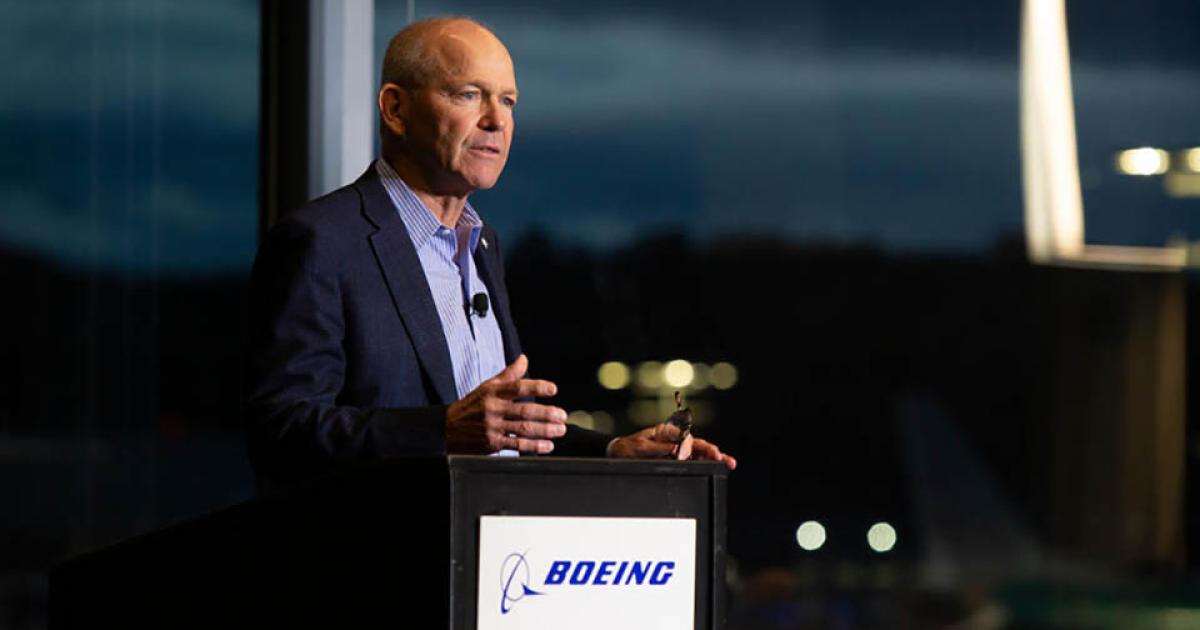• Senior Editor
Boeing CEO David Calhoun explicitly erased any notion that the company will launch the development of a new commercial airplane this decade during the company’s 2022 Investor Conference Wednesday, explaining that it needs to see the availability of technology capable of generating a 20- to 30 percent operating cost improvement over existing platforms before committing financial resources to any clean-sheet program. Calhoun stressed the need instead to concentrate on achieving “strict compliance” with quality standards and “normalizing” cash flow to about $10 billion by 2025 or 2026, a target he characterized as eminently achievable now that the company has mitigated what he called the existential risks it has faced since the grounding of the 737 Max in March 2019.
“I don’t want to fill a gap in a product line. I want to build a product that’s going to differentiate in a way that absolutely substitutes the airplanes that came before it,” said Calhoun. “That number has to be at least 20, 25, maybe 30 percent better than airplanes it replaces. And there are technologies and concepts that go with that and underlying ways of building it that can get you to that answer. And they all take time and they all have to be proven.”
Calhoun raised the likelihood that once a new airplane model does emerge, it will do so with the ability to fly autonomously. “It’s not unreasonable for us to think about autonomy on the next commercial airplane,” he commented. “I’m not sure the first one goes with autonomy, but it sure should be capable of it.”
The CEO also noted Boeing’s investment in Wisk, which just last month introduced a sixth-generation unpiloted eVTOL aircraft to succeed its two-seat Cora. Known as the Gen 6, the six-seat vehicle could serve as a basis for how the FAA certifies autonomous capability in a commercial jet sometime in the middle of the next decade. “We intend to invest in that Wisk product because there’s a discreet small market that’s not going to move the needle a whole bunch for everybody,” explained Calhoun. “It will educate the FAA on how to certify autonomy in the commercial airspace.”
In the meantime, Boeing’s primary focus will center on what Calhoun called producibility and stable, predictable delivery rates. Also appearing at the Investor Conference, Boeing Commercial Airplanes CEO Stan Deal reported two quality defects engineers identified with the 737 Max fuselage, cutting deliveries in October to 23 compared with 37 in September. Deal said the company would recover from the hiccup “quickly” as it works to meet a target of 375 airplanes this year. “We can surge and we will recover for our deliveries at the end of the year, but that adverse quality, which we have to manage out of the system, was an impact,” conceded Deal.
Meanwhile, supply chain disruptions continue to hamper Boeing’s ability to accelerate production of the 737 and 787 lines. Although Calhoun has characterized Boeing’s inventory of undelivered airplanes “an asset, not a liability” because it allows the company to backfill deliveries it otherwise couldn’t have made due to supply chain constraints, he said it takes as long to prepare an airplane in inventory for shipment as it takes to assemble one.
Assuming Boeing achieves the stability Calhoun so keenly desires, it expects its 737 rates to gradually increase from 31 a month to 50 by 2025 or 2026 and 787s—deliveries of which restarted in August after a lengthy pause triggered by various quality defects—to 10 by about mid-decade. By that time it hopes to reach a total of 800 airplanes a year, about the same number it delivered in 2018.
